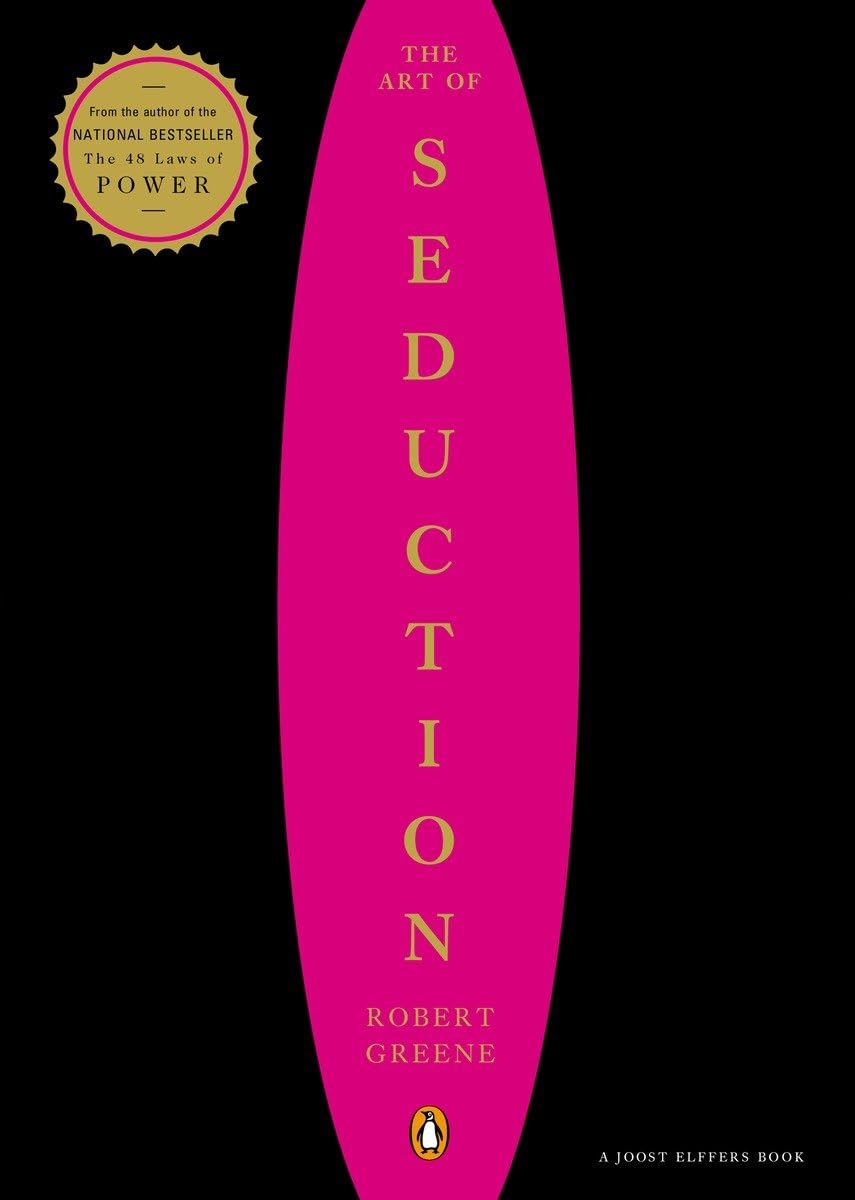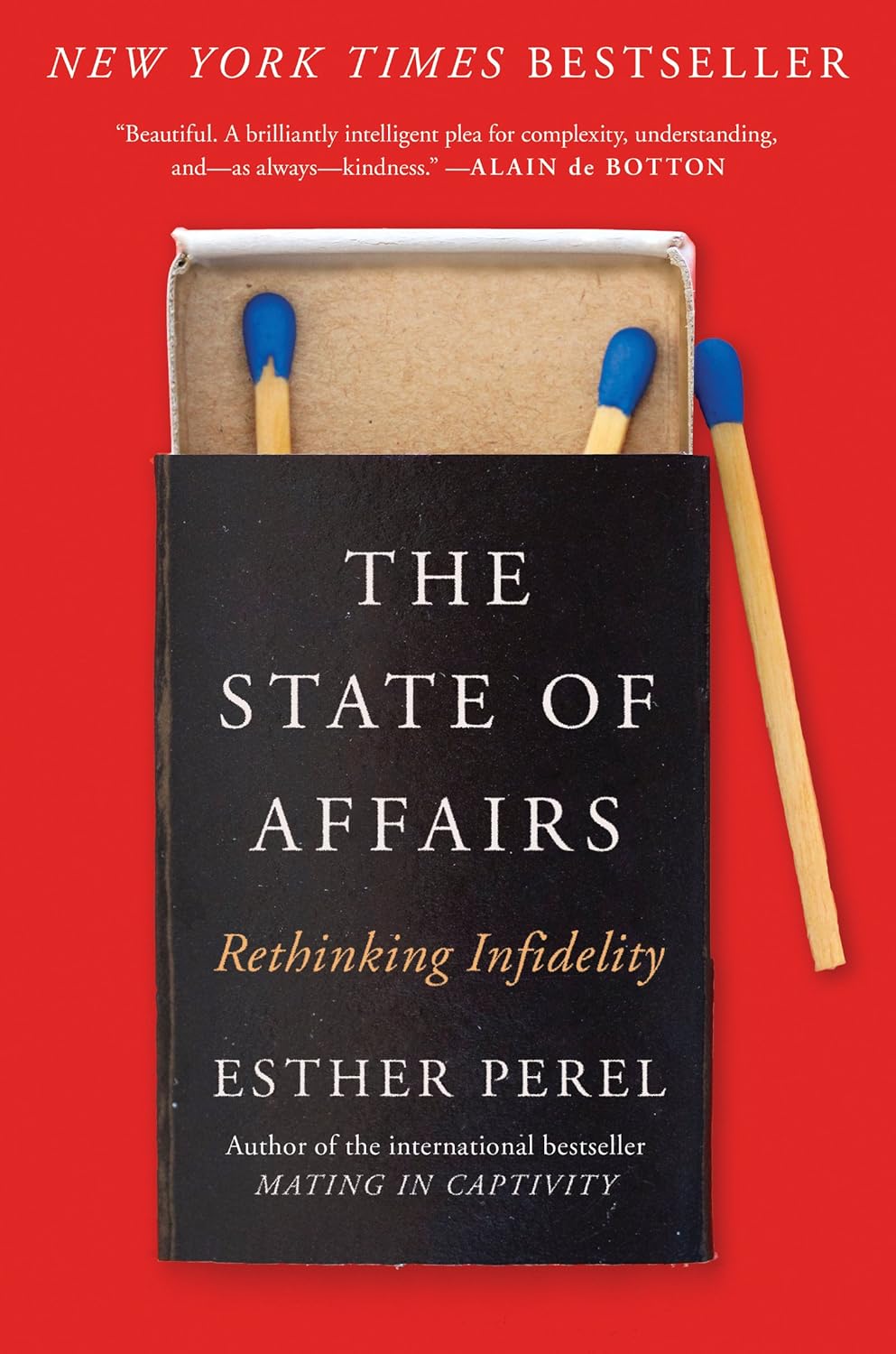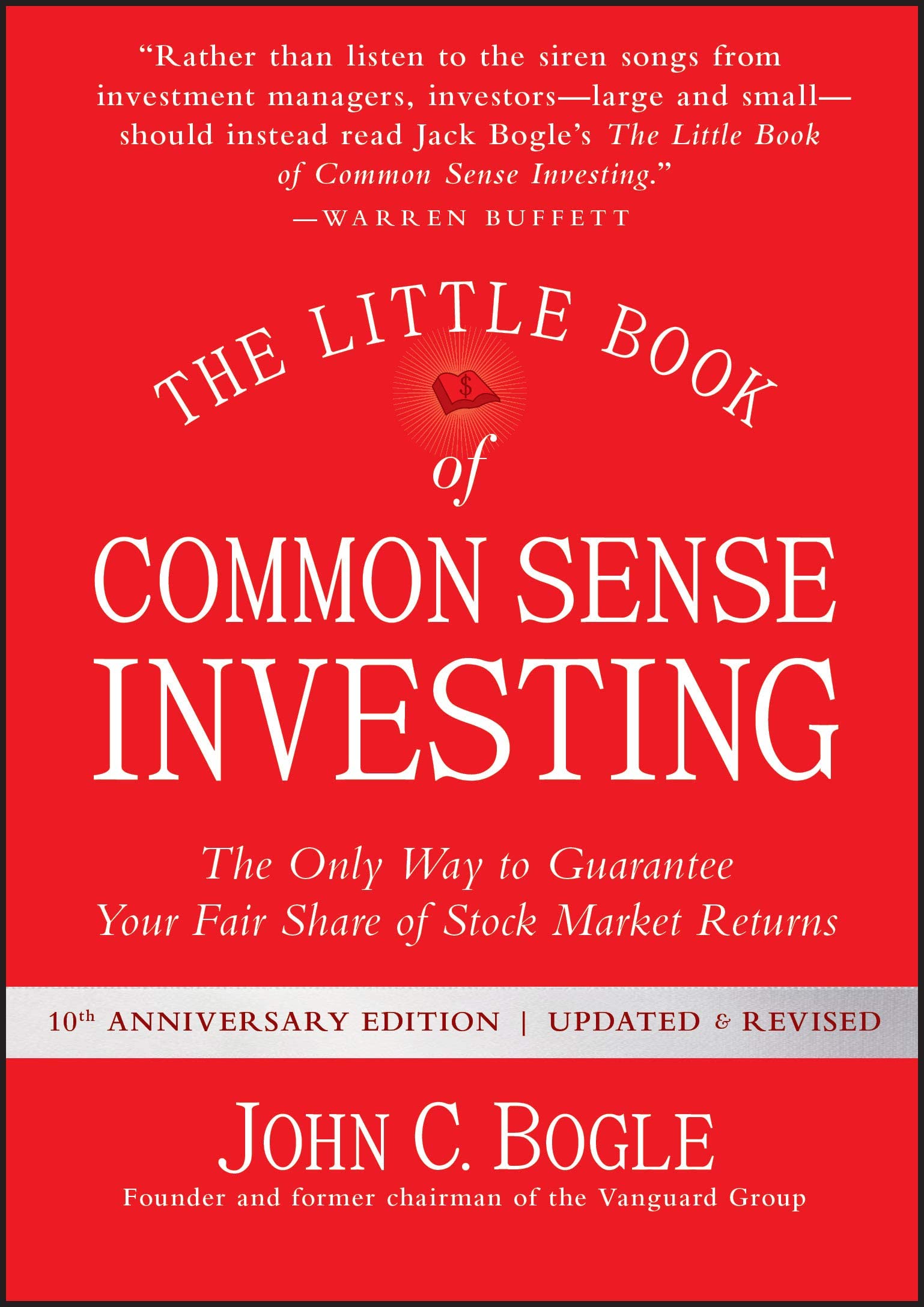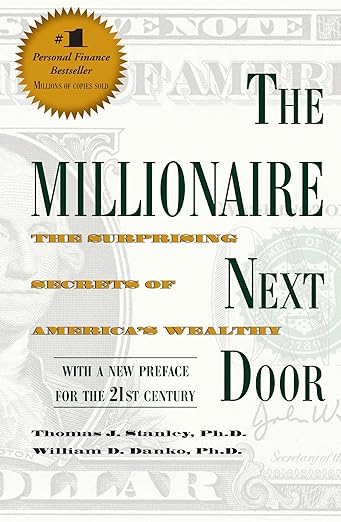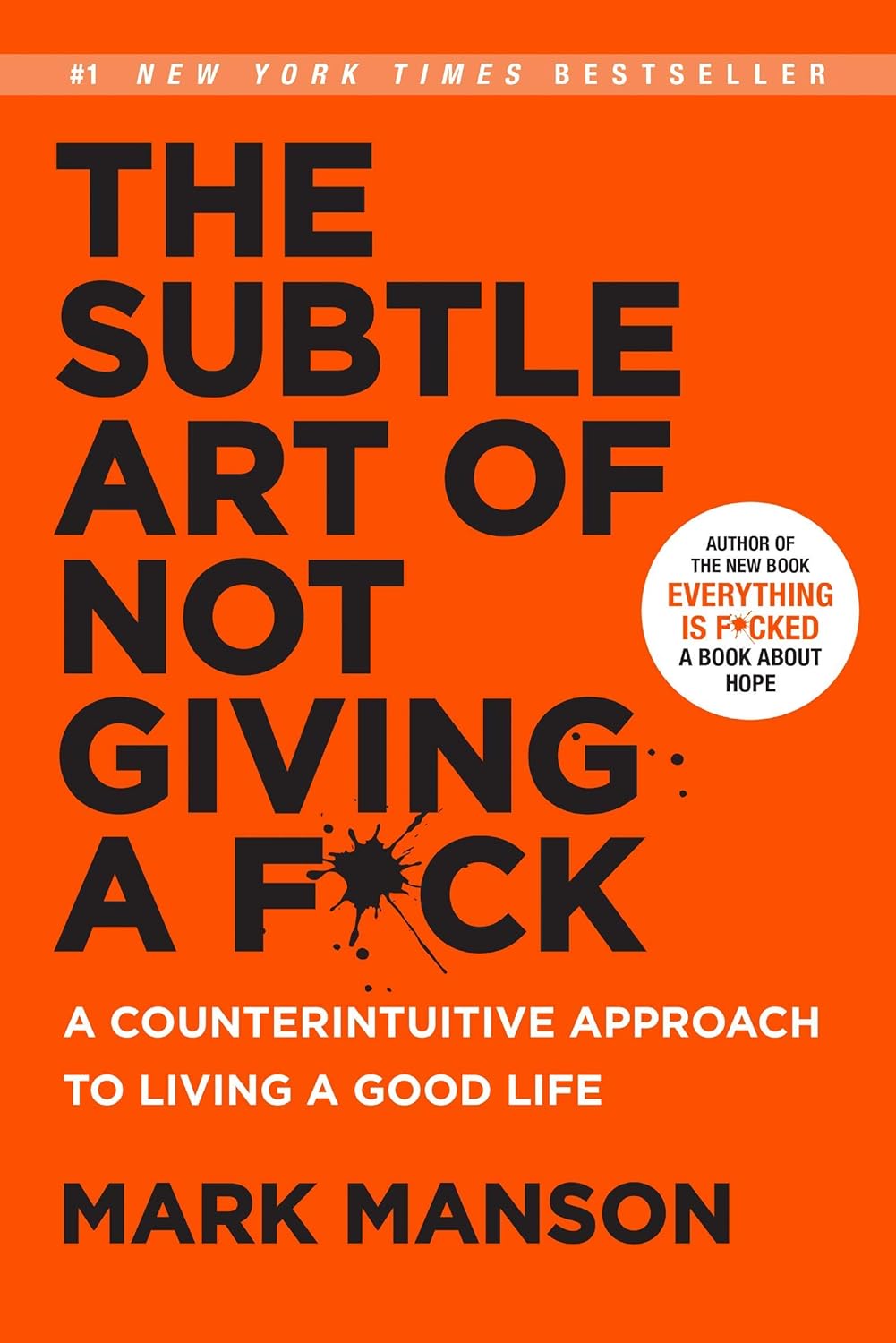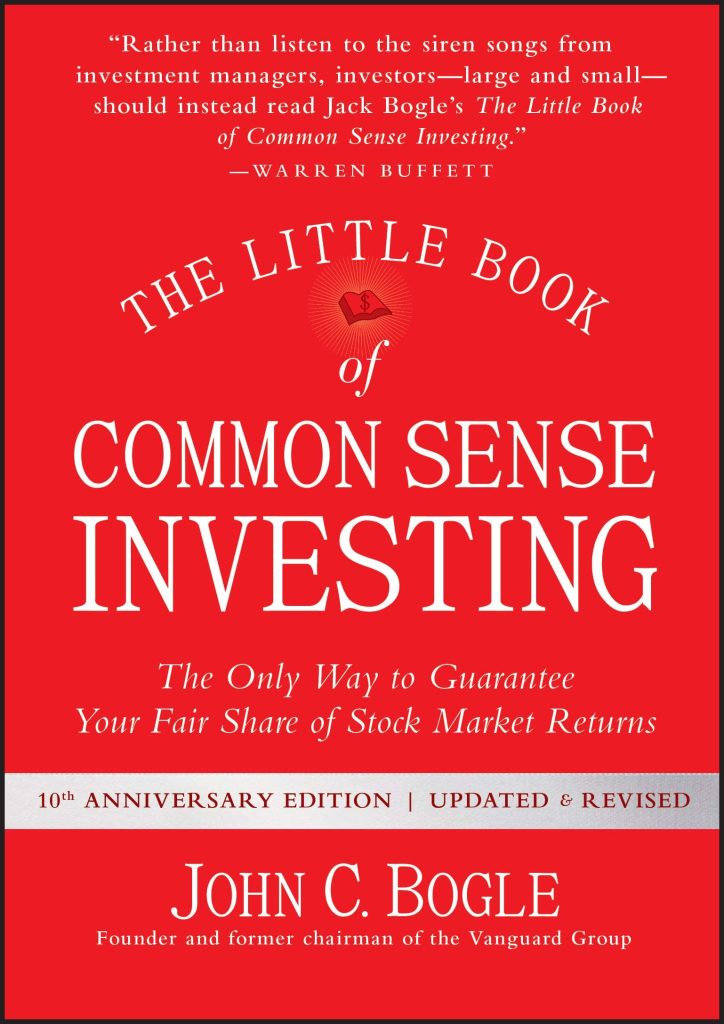
Buy The Book
Chapter
- ✦ Chapter One: A Parable
- ✦ Chapter Two: Rational Exuberance
- ✦ Chapter Three: Cast Your Lot with Business
- ✦ Chapter Four: How Most Investors Turn a Winner’s Game into a Loser’s Game
- ✦ Chapter Five: The Grand Illusion
- ✦ Chapter Six: Taxes Are Costs, Too
- ✦ Chapter Seven: When the Good Times No Longer Roll
- ✦ Chapter Eight: Selecting Long-Term Winners
- ✦ Chapter Nine: Yesterday’s Winners, Tomorrow’s Losers
- ✦ Chapter Ten: Seeking Advice to Select Funds?
- ✦ Chapter Eleven: Focus on the Lowest-Cost Funds
- ✦ Chapter Twelve: Profit from the Majesty of Simplicity
- ✦ Chapter Thirteen: Bond Funds and Money Market Funds
- ✦ Chapter Fourteen: Index Funds That Promise to Beat the Market
- ✦ Chapter Fifteen: The Exchange Traded Fund
- ✦ Chapter Sixteen: What Would Benjamin Graham Have Thought about Indexing?
- ✦ Chapter Seventeen: “The Relentless Rules of Humble Arithmetic”
- ✦ Chapter Eighteen: What Should I Do Now?
The Little Book of Common Sense Investing: The Only Way to Guarantee Your Fair Share of Stock Market Returns

About
In “The Little Book of Common Sense Investing,” the late John C. Bogle, founder of Vanguard, champions a straightforward, cost-effective approach to wealth accumulation. Bogle argues that outperforming the market is an illusion for most investors. Instead, he advocates for investing in low-cost index funds that mirror broad market indices like the S&P 500.
He demonstrates how active management fees, frequent trading, and taxes erode investment returns over time, diminishing profits for the average investor. Bogle emphasizes the power of long-term investing, diversification, and minimizing expenses as the keys to building wealth. By adhering to these principles and resisting the allure of chasing short-term gains, investors can secure their fair share of market returns and achieve financial success.

Spark
Learn
Review
✦ Chapter One: A Parable
Let me tell a story to explain how the stock market truly functions. It’s about a wealthy family, the Gotrocks, who own all the stocks in the U.S. They enjoy increasing wealth as their businesses thrive and pay dividends. However, Helpers arrive, convincing some family members they can outperform the others by trading stocks. These Helpers profit from commissions.
Unfortunately, the family’s wealth grows more slowly because the Helpers take a cut, and some members pay taxes on capital gains from trading. Seeking better results, the “smart” cousins hire even more Helpers – professional stock pickers – who charge fees. The family’s share of profits shrinks further as managers trade actively, increasing commissions and taxes.
Frustrated, the family hires consultants to pick the right managers, adding another layer of costs. The family’s share dwindles to just 60%. Finally, a wise uncle suggests eliminating all Helpers, returning to the original strategy of passively holding all U.S. stocks. The family’s wealth starts growing again, mirroring the success of American businesses. The story highlights that for investors as a group, returns decrease as activity increases. When businesses are conducted in a way that defies clients’ interest, change is due. Success in investing is about owning businesses, reaps rewards, and minimizing fees. The higher the level of activities, the less the net return that business owners receive. That is exactly what an index fund does.
✦ Chapter Two: Rational Exuberance
To grasp investing’s core, remember that, in the long run, owners collectively earn what their businesses earn. The record highlights the connection between business returns (dividends plus earnings growth) and stock market returns. This relationship is common sense.
Since 1900, stocks averaged a 9.6% annual return, matching the 9.5% investment return (4.5% from dividends, 5% from earnings). A tiny speculative return accounted for the difference, reflecting valuation trends. Compounding illustrates wealth creation over time. Stock market returns fluctuate relative to business fundamentals. Short-term market distractions cause us to overlook this history. Stock returns deviate due to investing emotions, which can be gauged by the price/earnings ratio. Greed causes high P/Es. Hope brings moderate P/Es. Fear creates low P/Es.
Prices and corporate values lose touch, but reality eventually rules. Past returns with speculative components don’t predict the future. We should heed the economist John Maynard Keynes: “It is dangerous to apply to the future inductive arguments based on past experience.” Keynes divided stock returns into enterprise (forecasting asset yields) and speculation (forecasting market psychology). Stock market volatility comes from investor emotion. It is better to ignore the short-term market and focus on the long-term economics of our businesses. The way to investment success is to get out of the expectations market of stock prices and cast the lot with the real market of business.
✦ Chapter Three: Cast Your Lot with Business
To align investment with business success, buy a portfolio mirroring all US companies and hold it indefinitely. This strategy ensures triumph while most investors collectively falter. Simplicity equates neither stupidity. In 1320, William of Occam said to choose the simplest solution. Occam’s Razor is the key. The simplest way to own American businesses is the total stock market portfolio.
For 80 years, the S&P 500 represented the stock market. Created in 1926, it lists 500 stocks, the largest US firms, weighted by market capitalization. This index adjusts automatically to stock prices, avoiding constant trading.
Since 1950, corporate pension funds used it as the measuring stick. In 1970, a broader measure emerged: the Wilshire 5000 (now the Dow Jones Wilshire Total Stock Market Index), which includes some 4,971 stocks. Market-capitalization weighting makes the remaining 4,471 stocks account for only 20 percent of its value. The index is the best measure of stock returns for the group of US investors. The S\&P 500 and the Total Stock Market Index have similarity. Whichever index applies, the stock market’s firms returns have to equal aggregate returns earned by investors as a group. Also, net returns must fall short of gross returns because of costs. Common sense dictates: own the stock market over the long term to win.
✦ Chapter Four: How Most Investors Turn a Winner’s Game into a Loser’s Game
To understand why investors don’t earn as much as their businesses, look at the simple math: all investors together make the market return, but only before costs. Subtract the costs—fees, commissions, loads, advertising, and operating costs—and what’s left is lower than the market return by exactly those costs. Therefore, beating the market before costs is a zero-sum game, but beating it after costs is a losing proposition.
These costs matter greatly. Trading costs for direct stock investors average 1.5% yearly. For equity funds, management fees and operating costs average 1.5%, plus 0.5% for sales charges spread over ten years. Hidden portfolio turnover costs add another 1%. With 100% turnover, funds buy and sell stocks a lot, creating major expenses. Equity fund ownership costs can hit 3% to 3.5% yearly. Thus, the irony is that we investors get exactly what we don’t pay for. If we pay nothing, we get everything.
Louis Brandeis warned of “the relentless rules of humble arithmetic.” Most investors don’t grasp what’s plain, perhaps rejecting it because it opposes their beliefs. Financial intermediaries don’t promote this reality, as their self-interest compels them to ignore it. However, you must look after your self-interest. It is only by facing the obvious realities of investing that the intelligent investor can succeed. By and large, these managers are smart, well-educated, experienced, knowledgeable, and honest. But they are competing with each other.
The high costs explain why fund managers consistently lag the market. Under today’s conditions of hidden costs, high stock returns, and focus on short-term gains, it’s easy to underrate costs’ impact.
✦ Chapter Five: The Grand Illusion
It is tempting to assume that shareholders get the reported returns of mutual funds. Actually, returns earned by shareholders trail behind the returns of funds.
The average fund investor gains less than reported fund returns. To work out the returns of the average fund investor, we consider dollar-weighted returns, which reflect capital flows in and out of the fund. Money goes into funds that have performed well and leaves when performance weakens. The average fund investor didn’t get the average return of 10.0 % but 7.3%
While the stock market index fund gave annual return of 12.3%, the average equity fund 10.0%, fund investors gained just 7.3% a year. In this way, fund investors make far less than what they could gain in simple index funds, due to faulty market timing and fund selection. Investors put too little of their savings into equity funds when stocks were a good value and too much when the bull market neared its peak. They put money into market at wrong times and in wrong funds.
A great performance is gained in 1996 to 2000. Returns from aggressive funds are very high. However, returns collapsed in 2001 through 2005. In 10 years, returns by aggressive funds and returns of shareholders were acceptable. The beauty of the index fund lies not only in its low expenses, but in its elimination of all those tempting fund choices that promise so much and deliver so little. In 2005 and 2006 investors started getting interested in dividend stocks. In the end it is important to set up plans and stick to it.
✦ Chapter Six: Taxes Are Costs, Too
Let’s not forget another often-ignored cost that cuts into investor returns: income taxes. Here, index funds gain a substantial edge. Most managed mutual funds are surprisingly tax-inefficient due to their short-term focus and frenetic trading.
The average equity fund now turns over its portfolio at about 100% per year, meaning the average stock is held for just 12 months. This contrasts with the 1945-1965 era, when turnover averaged just 16%. The result is that funds are now focused on short-term speculation rather than long-term investment. But index funds buy and hold forever, incurring minimal transaction costs.
From 1980-2005, active funds subjected taxable investors to an estimated 1.8% annual federal tax, dropping their after-tax return to 8.2%. Index funds, despite higher returns, saw lower taxes of just 0.6%, bringing their after-tax return to 11.7%. Compounded, the initial \$10,000 investment grew to just \$61,700 after taxes in active funds, versus \$149,000 in the index fund.
Looking ahead, dividends will continue to be a major part of returns. Index funds are relatively tax-inefficient in distributing dividend income. With their low expense ratios, almost all dividends paid on the underlying stocks flow to shareholders. Managed funds, with higher expense ratios, pass on only a tiny portion. That large a portion of dividend is consumed as a tax burden. So choose funds that maximize your dividend yield and minimize your tax payment.
✦ Chapter Seven: When the Good Times No Longer Roll
Looking back, the stock market’s 12.5% annual gain over the past 25 years was boosted by nearly 3% per year due to rising investor confidence, not just business growth. Typically, stock returns match business performance, with a 4.5% dividend yield and 5% earnings growth. While the past 25 years saw similar business returns, the added boost from rising valuations won’t likely repeat.
Today’s lower dividend yields mean we can’t expect returns as high as 12.5%. If corporate earnings grow as expected, stock returns might be 7-8%. Projecting forward, the price/earnings ratio might drop, cutting returns to 7%. This figure could change according to the price of the stock.
Given these more realistic future market gains, what can equity fund investors expect? We will remember the basic math of investing. It includes fees, taxes, and rising prices. With fund fees and reduced capital gains taxes, a 7% market return could yield a real return of only 1.4% per year for the fund investor.
The low-cost index fund gains even more value over actively managed funds with reduced investment returns.
✦ Chapter Eight: Selecting Long-Term Winners
To begin to know whether funds can win over the long term, first consider the records of funds that have won over the long term. Reviewing past performance, it is easy to find winners. But it is also easy to miss those that have done well for a while and then failed. It is then difficult for investment to last in the long term.
Of 355 equity funds existing in 1970, fully 223 have ceased to exist by now, including State Street Investment Trust. About 60 others underperformed the S&P 500 by more than 1 percent per year. Only 24 funds outpaced the market by more than 1 percent per year. Of those, only nine of them achieved their superiority when they were of small size.
But as their accomplishments have been known, the influx of cash has prevented them from making superior returns. Then, as a fund got large, so has its downfall been recorded.
The odds in favor of owning a equity fund that would outpace the market are much less than 100. This does not happen that portfolio managers could be found to be so excellent and has been sustained by the company over a long period of time.
The case is to consider the Legg Mason Value Trust, managed by Bill Miller, which has been outperforming the market, due to his skill and luck. The long term record proves that the fund would experience a short term streak.
✦ Chapter Nine: Yesterday’s Winners, Tomorrow’s Losers
Past performance is one of the forces used by fund investors. The idea is that selecting a fund that has produced superior returns in the past is one of the ways to go. But research indicates that depending on past performance is not a solid investment method. The most recent research showed that there is no relationship between past and future mutual fund returns. The funds that have won in the past are the funds most prone to become tomorrow’s losers. Also, it is not easy to find any fund that beat the market over long term.
In order to show whether the best equity funds of one decade will continue to be at the top in the next decade, we can start by taking out the top 10% of 355 funds that existed between 1970 and 1980 and see where they ended up. The average excess rate of return during the 1970s was high, at 4.4%, so those funds are very promising. After a decade of outstanding performance, here is what has happened during 1980 to 1990: 4.5% had disappeared, another 17.1% have underperformed the market. In the end, out of those 35, only 2 funds or 5.7% remained at the top. Another way of proving is looking at the bottom funds. After some calculation, the result showed that past failure predicts future failure. These results are a consequence of many factors.
✦ Chapter Ten: Seeking Advice to Select Funds?
Let’s contemplate the usefulness of retaining advisers to select funds. Financial advisers are knowledgeable in finance. The question is, are they able to select funds that will outperform other funds, or will the average fund investor obtain better results by simply selecting an index fund?
Theoretically, these advisers increase investor return. However, how many of them are able to give the investors more than what they have paid for? It has been found that they are not able to do so. The funds chosen by consultants underperformed the funds that the investor was supposed to retain. In fact, some surveys have shown that the actively managed funds recommended by advisers have been underperforming both the indexes and a composite of the returns on the funds that the plan sponsors would otherwise have invested in. These are shocking findings because it shows that actively managed funds recommended by consulting firms do not add value and it makes you wonder what these consultants have been up to. It may be because fund advisers have a bad selection process, or they could simply be bad at math.
One thing that can be inferred from the evidence is that financial intermediaries might just be collecting the fees and do not care about the benefits and interests of fund investors. After all, beating the market is a losing game before the costs, such as consulting fees, are deducted. The only way to succeed in this field is to eliminate the excessive costs and select low-cost funds.
✦ Chapter Eleven: Focus on the Lowest-Cost Funds
When all else is equal, it is always advisable to select the lowest-cost funds. In this field, costs can be known with certainty. The expense ratio and the turnover rate of funds are disclosed for reference. Yet fund investors, even institutions, ignore them. If we compare the funds according to performance, it is like choosing a fund based on its performance in a marathon, rather than on the price of the running shoes. For the most part, low-cost strategies win. Low-cost funds have outpaced high-cost funds over both the short and long term. The lower the costs, the higher the returns.
It is important to examine the returns from low-cost funds. A large portion of low-cost funds have outperformed the funds in the high-cost quartile. This result was also seen with bond funds. However, because bond funds only earn an investment return in the 6 or 7 percent range, they are very much harmed by costs as much as the bond funds with high costs. It was proven that high costs harm bond investors, in a similar manner to stock investors.
In fact, it may be useful to change the adage “you get what you pay for” to “you get what you don’t pay for.” In order to succeed, one must get into the cost-cutting mood. The lower the costs, the greater is the fund’s chance of surpassing the normal fund in that category.
✦ Chapter Twelve: Profit from the Majesty of Simplicity
It is possible to profit from the majesty of simplicity. The simplest way to own American businesses is to buy an index fund. The key features of index funds is that they hold hundreds of stocks which represent market capitalization. Thus they can automatically adjust with minimal buying and selling.
Given the market-matching returns, investors in index funds will have no risk to pick up the wrong companies. As the index fund offers average returns of the firms, it will certainly not decline too much. In this way, the index fund is able to provide stable returns compared to other businesses. Also, costs can be reduced with the index fund. It is because less buying and selling is done. If we have to manage on our own, there will be high risk due to costs. If there is a lower price on the stock market, the index fund is able to automatically buy those securities at a lower price, but if manage by ourselves, we may sell stocks at a discount. Thus, the index fund has advantages such as stability and low costs.
We have talked much about the costs of the index fund, and there are other costs, such as the tax. It was revealed that if an investor keeps trading mutual funds, they will pay high taxes, as short-term capital gains can occur. As an index fund can avoid transactions, it can be more tax efficient compared to other mutual funds. Simplicity is the ultimate sophistication.
✦ Chapter Thirteen: Bond Funds and Money Market Funds
For most of the book, discussion revolves around stocks. However, the investor should consider the impact of bonds. Bond Funds are more difficult to understand compared to money market funds and stock index funds.
Unlike the stock market, there is no one clear bond market. Bonds are issued by the government, municipalities, and corporations, and all of these entities have varying returns and risk profiles. In contrast to stocks, bonds are valued by their yields. The rule is that the yield of a bond is lower in the market compared to its initial yield when first issued. However, when the market rate is low, it is tempting for corporations to issue bonds.
When investors put money in bond funds, there are also risks to consider. There could be the default rate from some corporation issuing bonds, and bond prices are more volatile, due to inflation. A money market fund is an investment type that is supposed to be stable in price and liquid. There may also be a wide diversity of money market funds, with different risk levels. However, even in general, investing in a money market carries risk. In the end, you will find that expenses are critical to money market funds.
✦ Chapter Fourteen: Index Funds That Promise to Beat the Market
It is often said that index funds are guaranteed to match the market average, and there are also enhanced index funds which promise to outpace the market. These funds usually track some index, which differs from the total market. There are large-cap enhanced index funds, sector index funds, large cap value funds, and growth funds.
These funds are all passively managed, so costs are low. However, even though there are potential profits, an enhanced strategy is risky. To start with, the enhanced fund will have less diversity, which can cause large losses. Also, the index fund’s success is heavily dependent on the stock market. As we move on from one cycle to the next, there is no way of knowing which cycle there will be, and so the index funds will underperform the market for a long duration. This often happens when a new hot fund performs well and receives lots of investor cash, only to have the fund underperform. Lastly, the fund is less predictable. A final reason is that the investment styles rotate in and out of style all the time. No strategy consistently thrives, and a new strategy has no chance of lasting.
✦ Chapter Fifteen: The Exchange Traded Fund
An exchange-traded fund (ETF) is not a mutual fund, but it shares similarity with a stock. When we want to invest in stocks, we can invest in index funds and ETFs. However, they are different.
An ETF trades like a stock. When the stock market is trading, we can acquire an ETF. Like other stocks, ETFs trade at prices determined by the stock market. Also, like stocks, ETFs are required to be open for trading in a marketplace. The ETF has a higher level of flexibility. On the other hand, the mutual fund’s price is determined at the end of each trading day. Also, to acquire the mutual fund, it may involve contacting the provider.
Some of the costs associated with ETFs are very low. For index ETFs, costs could be minimal. However, when an ETF is in niche investing, its expense can be huge, so the returns are very limited for the fund investors. In theory, the fund is supposed to give an average return, due to its design in the business. So the only way to beat others is to lower the costs of investment and other expenses. Therefore, it is critical to reduce the costs involved to maximize the returns. An ETF can be used as an alternative to index funds.
✦ Chapter Sixteen: What Would Benjamin Graham Have Thought about Indexing?
In order to determine what Graham had thought about indexing, his principles about how to value the business, should be applied.
Graham said that we, as investors, should have our own judgement to determine the price of companies, rather than depending on the market. He would have agreed that the best strategy is to own all of the stocks and stick to the portfolio, because there is no risk of losing money.
He also considered what to do when selecting a business. He believed that there are various types of opportunities, but one rule is important. If a company is expected to grow at a high rate, the risks will be high and this should be avoided, in order to prevent huge losses.
If we have to buy common stocks, the way to reduce risk is to have broad diversification, so the impact of stock market volatility will be lowered. By having an index fund, the diversification is maximized. Also, by choosing the market index, it will not be easy to overprice an asset. This allows low investment costs, and reduced portfolio management. In this way, with an index fund, all rules are obeyed. He had also addressed the issue of the manager being in charge. It is important for portfolio managers to have the skills to control fund managers. But what is more efficient than not having a fund manager in charge of business? This is what an index fund is.
✦ Chapter Seventeen: “The Relentless Rules of Humble Arithmetic”
Selecting consistently successful equity funds is exceedingly rare, a truth often overlooked. Analyzing the 355 equity funds from 1970 reveals that only a tiny fraction sustain excellence over decades. A staggering number, 223, disappeared, while 60 underperformed the S\&P 500, highlighting the volatile nature of fund performance and manager longevity. Identifying a fund poised to consistently beat the market is exceptionally challenging, with odds stacked heavily against investors.
The allure of past performance often drives fund selection, yet historical success doesn’t guarantee future dominance. Funds with initial triumphs frequently falter as assets grow, diluting the impact of investment strategies. This phenomenon underscores the difficulty in sustaining superior returns in a dynamic market.
Even funds with notable managers, like Legg Mason Value Trust under Bill Miller, illustrate the challenges of consistent outperformance. While Miller achieved an unprecedented streak of outperforming the S\&P 500 for 15 consecutive years, his eventual reversion to the mean underscores the role of both skill and luck in investment outcomes. Success in identifying managers with both talent and sustainable strategies proves to be exceptionally difficult for investors.
✦ Chapter Eighteen: What Should I Do Now?
So you may be wondering what to do now. Given the ideas and concepts on the stock market from the previous chapters, you may consider whether to act. It’s important to have a clear plan and take action.
To begin, construct a diversified portfolio. To determine the portfolio design, find out how much one can endure from the market’s downside. Then, the investors need to have a plan and stay the course. Even when there is a crash, stand firm. This is the key to success. Next, stay diversified in times of ups and downs.
Then comes the need to find out how much international funds to allocate, such as the ones in developed countries. Another need is whether to include real estate and commodities funds. As you continue, make sure not to seek any investment advice. The more you focus on doing these things, the more you face a risk. With those investment options, you run into fees. There will also be times when you want to change the rules and you face the temptation. Yet it is important to stay away from the herd. Don’t be afraid to embrace it. This is critical in determining the success in long-term investment. Always stay the course, regardless of how well or how poorly the market is doing. If you keep on trading, the costs can be high. In the end, to stick to the plan, you need the knowledge of what and how to act.
For People
– Novice Investors
– Retirement Savers
– Index Fund Enthusiasts
– Cost-Conscious Investors
– Long-Term Investors
Learn to
– Investment Simplicity
– Cost Awareness
– Long-Term Perspective
– Market Realism
– Diversification Understanding





